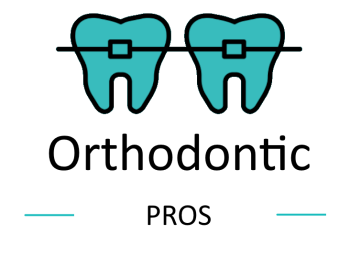Table of Contents
 Are gaps between your teeth causing you to feel self-conscious about your smile? Discover how addressing these gaps can enhance the appearance of your teeth and improve your oral health. This article will explore the causes of gaps between teeth and the various treatment options available to help you achieve a confident, gap-free smile.
Are gaps between your teeth causing you to feel self-conscious about your smile? Discover how addressing these gaps can enhance the appearance of your teeth and improve your oral health. This article will explore the causes of gaps between teeth and the various treatment options available to help you achieve a confident, gap-free smile.
Gapped teeth can harm a person’s self-confidence and self-image, causing them to feel self-conscious, especially when smiling. This can impact how individuals are seen, especially in professional contexts, raising worries about the need to be taken seriously. Aside from cosmetic issues, gaps between teeth, known as diastema, can offer oral health hazards, such as an increased risk of gum disease owing to the collection of germs, plaque, and tartar. These oral health disorders can lead to tooth decay and damage if not handled properly.
What is Diastema?
Diastemas are gaps or spaces that form between two teeth, most typically between the incisors, but can also occur between any two teeth. According to the American Dental Association (ADA), around 25% of people suffer from diastema.
Diastemas, or gaps or spaces between teeth, can form due to a size difference between the teeth and the jawbone. When the teeth are smaller than the jawbone, visible spaces may appear. Conversely, crowding can occur if the teeth are more significant than the available space. Genetic factors often influence the size of the jawbone.
The spacing issues can develop for other reasons, too, such as:
- When a tooth is missing, undersized, or irregular, it can contribute to the development of spaces or gaps between the surrounding teeth.
- Thumb-sucking during childhood can lead to gaps between the teeth as it exerts pressure and pulls them forward.
- Spaces between the teeth can develop due to incorrect swallowing reflexes, known as tongue thrust, where the tongue exerts pressure against the front instead of the roof of the mouth during swallowing, gradually pushing the teeth forward and creating gaps.
- Periodontal gum disease, characterized by bone loss and gum infection, can lead to insufficient bone support, resulting in gaps between teeth. Gingivitis, a mild form of gum disease, can also contribute to bone loss and tooth mobility, developing spaces between teeth.
What Causes Gaps Between Teeth?
Gaps between teeth can occur due to habits like tongue thrusting or thumb sucking, often seen in children, where pressure against the teeth can lead to gaps over time. Children who use pacifiers or suck their thumbs are also at risk of developing gaps, which can impact their dental health. Additionally, retaining baby teeth beyond their healthy lifespan can form gaps.
Gap teeth can be caused by the growth and size of the labial frenum, the flap connecting the upper lip to the gums, which can separate and create a gap if it is too large. Gum tissue shifting and tooth size can also contribute to gaps forming between the teeth. Dental habits and other factors can also play a role in developing gap teeth.
Treatments for Gapped Teeth
During the initial consultation, your dental professional will discuss various techniques to close a gap tooth and determine the most suitable treatment option for your dental needs. Some common treatments used to address teeth gaps include.
Invisalign
Invisalign clear aligners are custom-fit to your smile, providing an efficient procedure for closing diastemas and offering additional benefits such as fixing bite complications, crooked teeth, malocclusion, and other alignment issues. Orthodontists use these aligner trays to gradually shift the teeth together over multiple sessions. Ceramic braces are another discreet option for closing gaps in teeth.
Porcelain Veneers
Porcelain veneers are thin shells placed over natural teeth, effectively concealing imperfections and providing an excellent cosmetic solution for closing gaps in teeth. They are a popular and effective treatment option in cosmetic dentistry for addressing this issue.
Tooth Bonding
Tooth bonding is a quick procedure, typically taking less than an hour to complete. Your dentist will carefully select a composite color that matches your natural teeth and skillfully sculpt the resin material to close the gap, resulting in a seamless and natural-looking tooth appearance. This front tooth filling or gap filling can significantly enhance the overall appearance of your teeth.
Dental Crowns
Crowns or caps effectively cover the entire tooth and close gaps. By using a crown, you can enhance your teeth’ appearance and durability. Once the crown is permanently bonded, you can enjoy a long-lasting solution without the concern of it coming off.
Frenectomy
In cases where the labial frenum is oversized and causes gaps between the front teeth, a frenectomy procedure may be performed to reduce the size of the frenum. Following the frenectomy, orthodontic treatment is typically required to close the resulting gap and achieve proper tooth alignment. This combined approach helps address both the frenum issue and the gaps between the teeth.
Gaps between teeth, known as diastemas, can affect your confidence and oral health. Understanding the causes of these gaps is crucial for finding suitable treatment options. Whether using Invisalign, porcelain veneers, tooth bonding, dental crowns, or undergoing a frenectomy, effective solutions are available to close these gaps and achieve a confident smile. Consult with your dental professional to explore the best approach for addressing your specific needs and enjoy the benefits of a gap-free smile and improved oral well-being.

